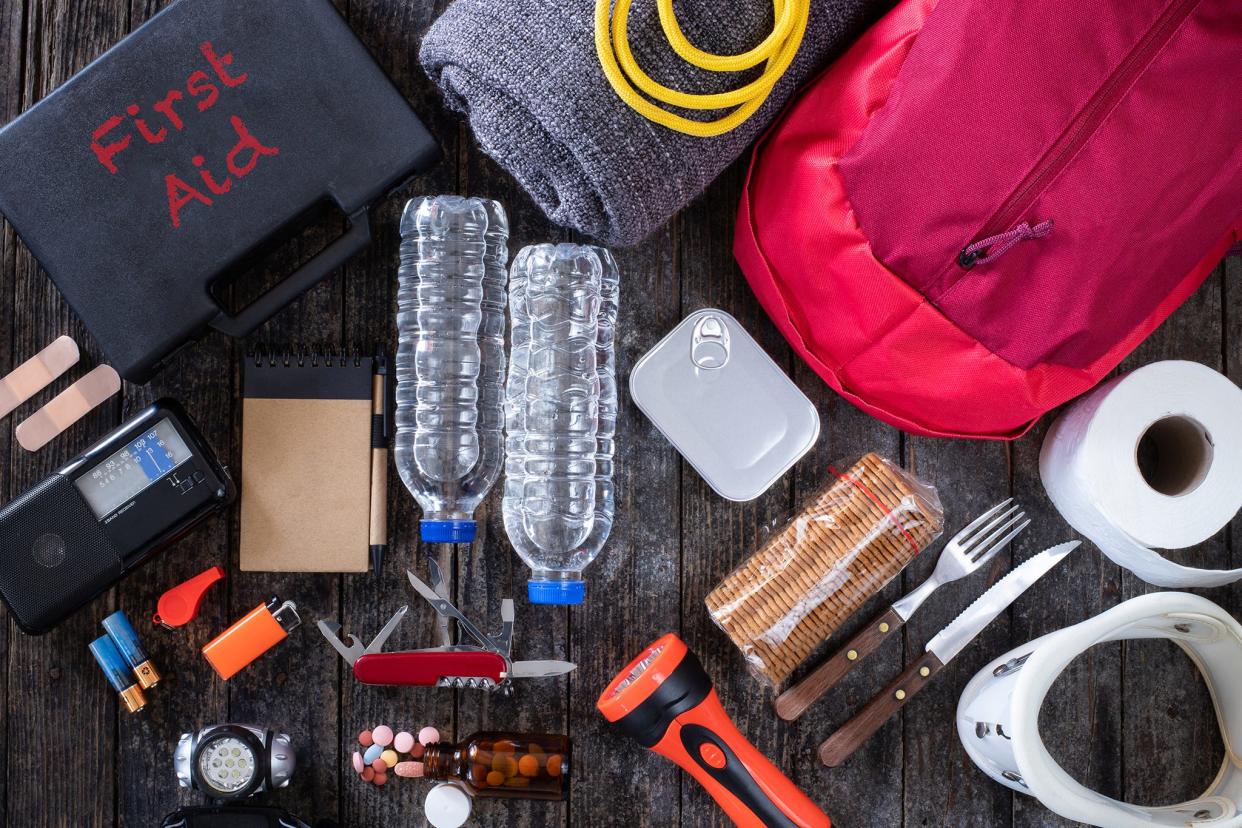Prepare for the Unexpected: Create a Home Emergency Kit with These Must-Have Items

According to the National Centers for Environmental Information (NCEI), in 2021, there were 20 weather disaster events with losses exceeding $1 billion each that affected the United States. NCEI says this included one drought, two flooding events, 11 severe storms, four tropical cyclones, one wildfire, and one winter storm.
While we were fortunate not to experience one of these major events in our area, it’s important to always be prepared. Severe weather is not uncommon in Michigan, and there may be times when a winter storm keeps us inside for a few days or longer, possibly even without power. Should that happen, do you have all you need to get by?
A little preparedness can go a long way, so check out these items every homeowner should have in their home emergency kit.
Basic needs
To get started, think about the two most important survival basics: food and water. REALTOR® Jeff Carrow with Century 21 Affiliated, who is also a local firefighter and paramedic, suggests storing one gallon of water per person, per day for at least three days, for both drinking and sanitation.
“You’ll also want at least a three-day supply of non-perishable food for everyone in the house,” he said. “Think about small items that store easily and pack a big punch like protein bars, jerky, trail mix, dried fruits, etc. And don’t forget your pets when collecting food and water.”
In Michigan winters, warmth is also a critical need. Be sure to store things like warm clothing, a sleeping bag, extra blankets, and hand warmers for each member of the household.
Next, think about lighting. Clean-burn candles are a good option, but because they are a potential fire hazard if left unattended, it’s best to have other items available. Keep a couple of flashlights in your kit as well as extra batteries. There are also rechargeable emergency light bulbs and lanterns available at home improvement stores and online. A battery-powered or hand-cranked radio is also good to have on hand, as well as a battery-powered or solar charger for your cell phones.
First-aid supplies
When it comes to basic medical supplies, here are some suggestions:
Adhesive bandages and sterile dressings
Sterile gloves
Soap
Burn ointment
Eye wash
Thermometer
Scissors
Tweezers
Aspirin or non-aspirin pain reliever
“During the winter months, people are more likely to get sick, so having things like decongestants, cough syrup, cough drops, and extra tissue can really be helpful,” said Carrow. “Also, if any family members have prescription medication, it’s wise to store a few extra doses, if possible, in case you can’t get to the pharmacy.”
Other supplies
In addition to the above items, homeowners should also consider including things like a manual can opener, a wrench or pliers (to turn off utilities), matches in a waterproof container, a whistle (to signal for help), a fire extinguisher, and cash or traveler’s checks. Ready.gov says it’s also good to keep copies of important family documents such as insurance policies, identification cards, and bank account records in a safe place.
And because our reliance on electricity has grown tremendously over the years, Carrow recommends that homeowners invest in an external emergency generator.
“They are not only useful for basic needs like keeping the heat going and running a sump pump, but for some people, electricity is essential,” he said. “CPAP machines and oxygen concentrators, medications that require refrigeration to stay safe and usable…there can be serious consequences if the power is out for too long. Having a generator on hand as well as extra fuel to run it can be extremely beneficial.”
And Carrow suggests regularly checking and replacing the batteries in your smoke alarms and carbon monoxide detectors. He also says homeowners should replace the units every 7-10 years, or earlier if a problem is suspected.
“In the winter, especially, it’s important to ensure these are functioning properly,” he said. “When the power goes out, people will occasionally use alternative gas-powered heat sources for heating or cooking – although this isn’t advised – and these can cause carbon monoxide to build up in the home.”
Have a plan
Once you have your supplies, write the date you store food and water on all containers. Keep canned food in a cool, dry place, store boxed food in tightly closed containers to protect it from pests, and change food, water, medicine, and batteries every six months.
“Keep all items together in one area and make sure everyone in your family knows where it’s located,” said Carrow. “Put together a list of everything and keep it in a laminated sleeve so you can easily check the contents. Review the kit every year and make sure to update it as your family’s needs change.”
And just like schools go through fire and extreme weather drills, Carrow suggests that every household practice their own emergency procedures.
“If there is a fire, what exits will everyone use and where will you meet?” he said. “If someone has a medical condition, do you know how to help? If there is a freeze, do you know where your water shut-off is located? If you can’t access your cell phone or computer, do you have a list of important numbers? Having regular family meetings to review and practice your plan is an important step in being prepared.”
For more homeowner tips and information, follow the Greater Lansing Association of REALTORS® on Facebook.
This article originally appeared on Lansing State Journal: Create a Home Emergency Kit with These Must-Have Items

